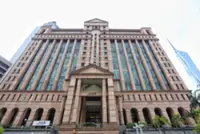FILE PHOTO: The San Francisco skyline is seen behind a self-driving GM Bolt EV during a media event where Cruise, GM's autonomous car unit, showed off its self-driving cars in San Francisco, California, U.S. November 28, 2017. REUTERS/Elijah Nouvelage/File Photo
(Reuters) - U.S. robotaxi operators could face increased regulatory scrutiny after an accident involving Cruise, the self-driving cab business of General Motors, forced the company to pause service.
In October, one of Cruise's driverless cabs was not able to stop in time from hitting a pedestrian who had been struck by a hit-and-run driver, raising safety concerns around the use of robotaxis.
Already a subscriber? Log in
Save 30% OFF The Star Digital Access
Cancel anytime. Ad-free. Unlimited access with perks.





